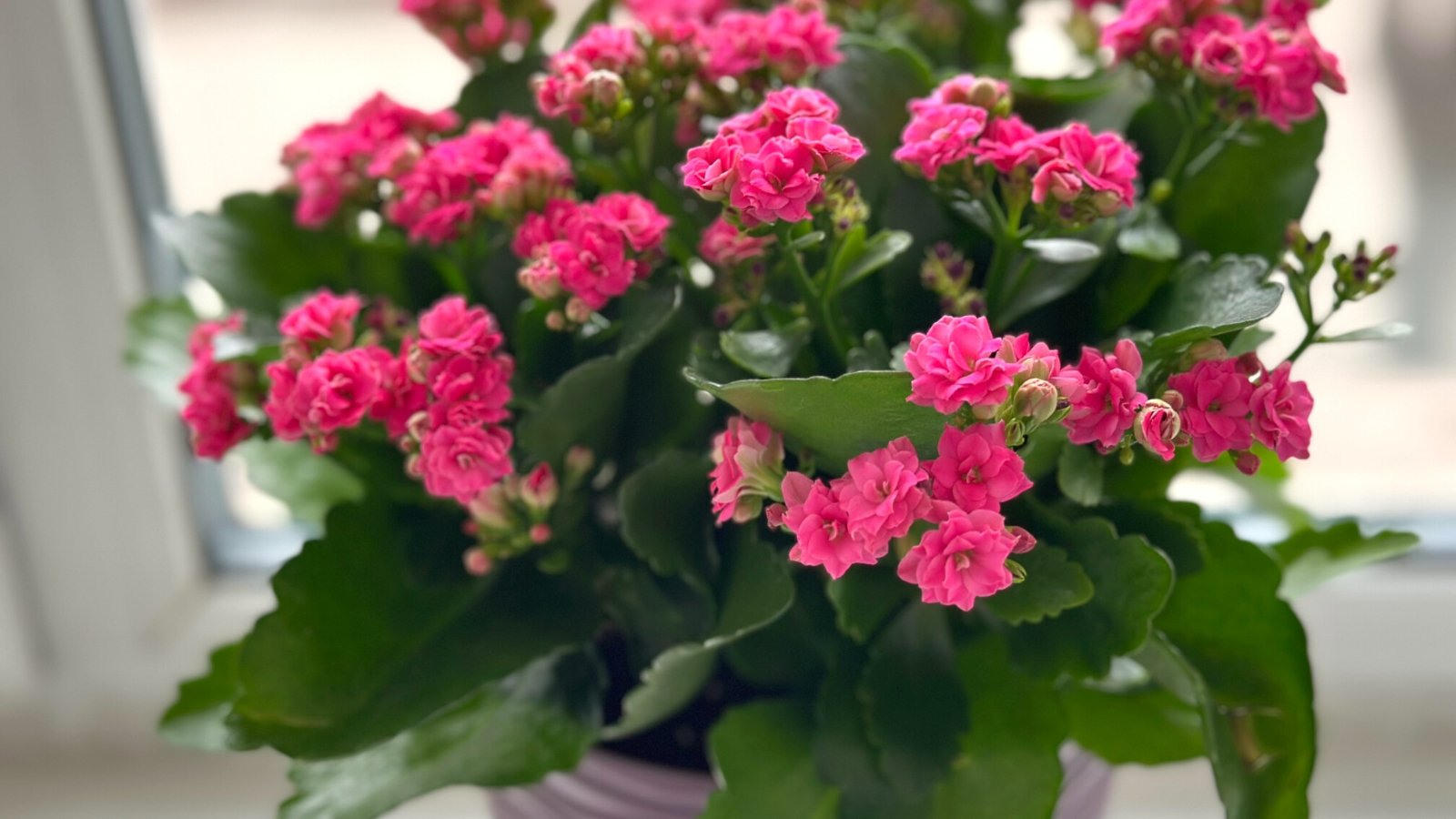[ad_1]
From the very small to the very tall, succulent crops are a wonderfully uncomplicated strategy in order so as to add persona and pizzazz to your indoor yard. They not typically bear factors with pests and illnesses, and loads of are winter bloomers, bringing much-needed aptitude to the dreariest time of 12 months.
If you happen to want to add shade and curiosity to your houseplant assortment when many crops are dormant, you’ll have so much to pick out from. Listed below are 16 of my favorite flashy succulents with implausible flowers and lovely foliage to make a splash inside the indoor yard.
Seaside Bells
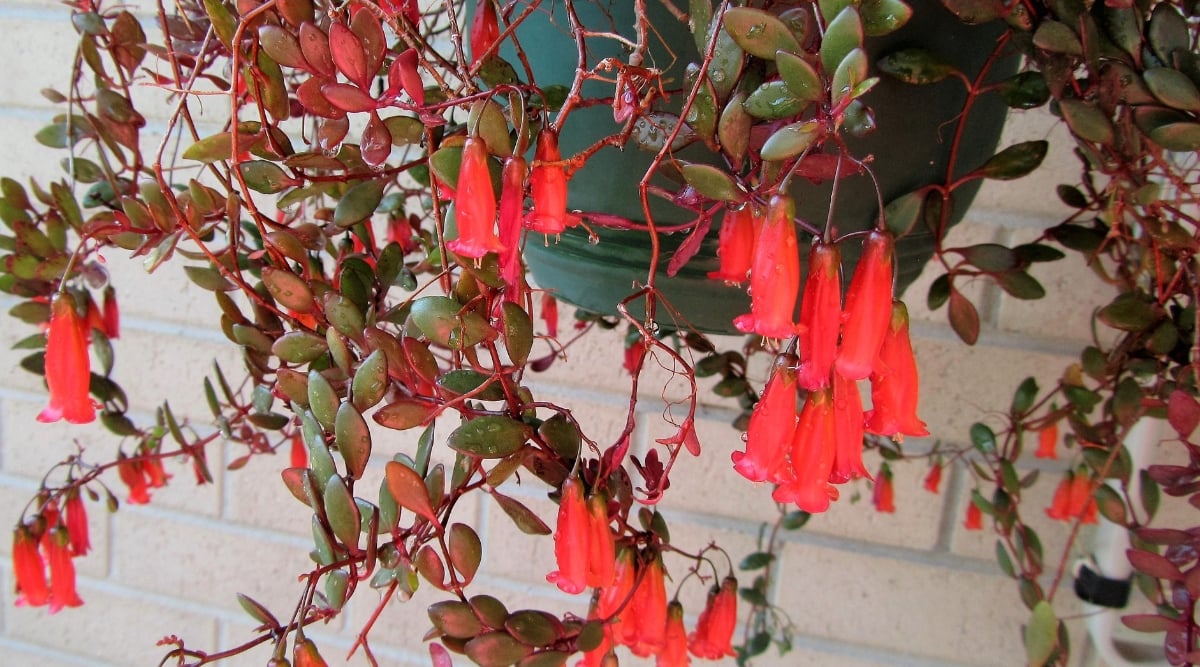

I’ve to start this itemizing with a species of Kalanchoe because of this genus is dwelling to some of probably the most beautiful succulent crops I’ve ever seen. ‘Seaside Bells’ is a stupendous plant with vivid inexperienced leaves with pink margins, rising alternately on pink stems. The great pink, pendulous flowers are bell-shaped and bloom in clusters on the excessive of stems.
Kalanchoe care is sort of straightforward. These crops like vivid nonetheless indirect mild for most of the day, which makes them good indoor crops. They’re going to tolerate some direct morning photo voltaic, nonetheless varied hours will set off the plant stress. Water must be sparing inside the winter, generous within the summertime, and cheap in spring and fall.
String of Rubies
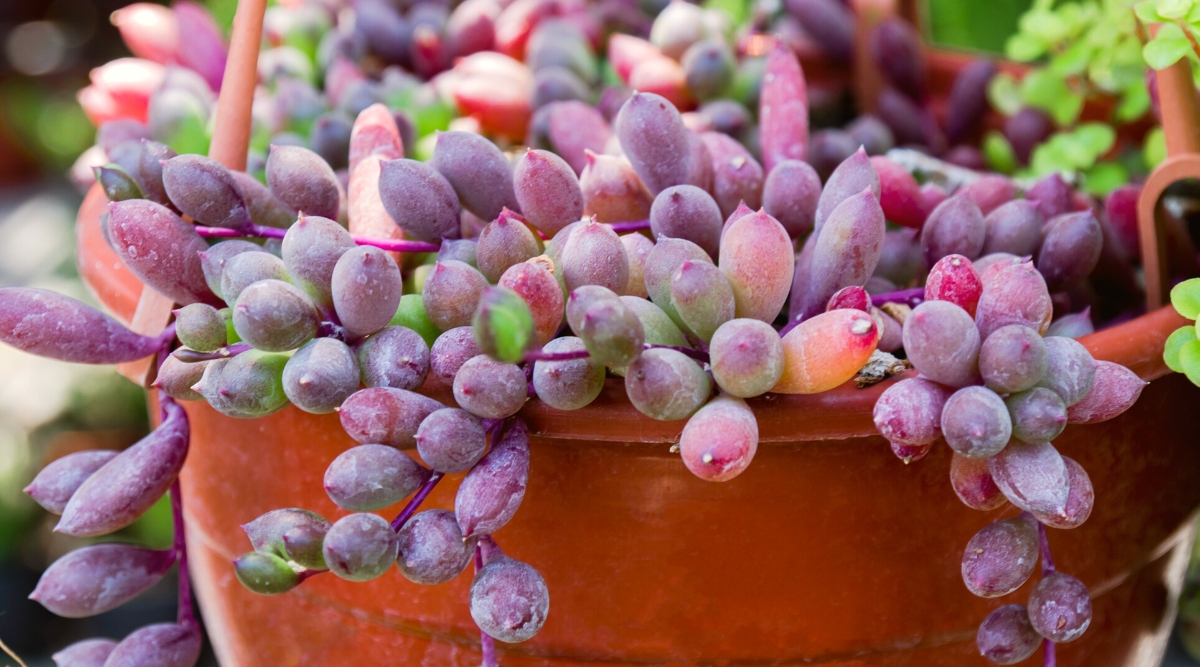

I merely love this sweet little string plant for its beautiful foliage and doubtless probably the most beautiful flowers. String of Rubies is a trailing succulent with bean-shaped leaves that blush to a stunning shade of pink when the plant is burdened by photo voltaic or chilly. Not all stress is harmful because of this coloration models this plant in a class all its private.
Small, yellow flowers bloom on the ends of prolonged trailing stems and swap their faces in the direction of the sky. The scarlet foliage and sunny flowers make this a extremely eye-catching plant. Give this succulent a great deal of daylight and further water than the everyday succulent. Merely make sure to plant it in a container with great drainage. It appears to be notably beautiful when cascading from a dangling basket.
Black Rose Aeonium
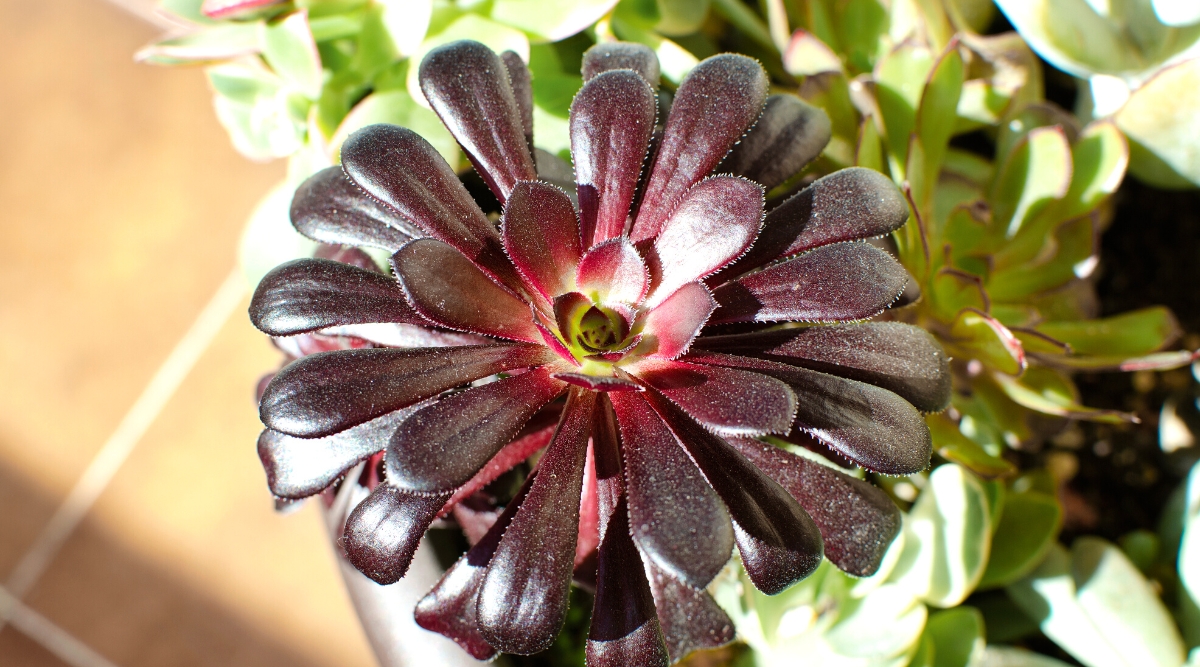

This eye-catching succulent is a superb addition to the indoor yard. ‘Black Rose’ is a uniquely darkish purple variety of aeonium that sorts implausible, big rosettes of deeply colored leaves that lighten in the direction of the center, making them extra flashy. When the plant enters its summer season dormancy, the leaves curl inward and resemble a darkish, moody rosebud.
This plant can grow to be treelike in sort over time, however it grows pretty slowly, reaching three to 4 toes at maturity. It requires little water and a great deal of photo voltaic, so make home in a sunny spot for this plant. Between the winter and spring, it moreover produces small yellow flowers, which look implausible in opposition to the deep foliage.
Chandelier Plant
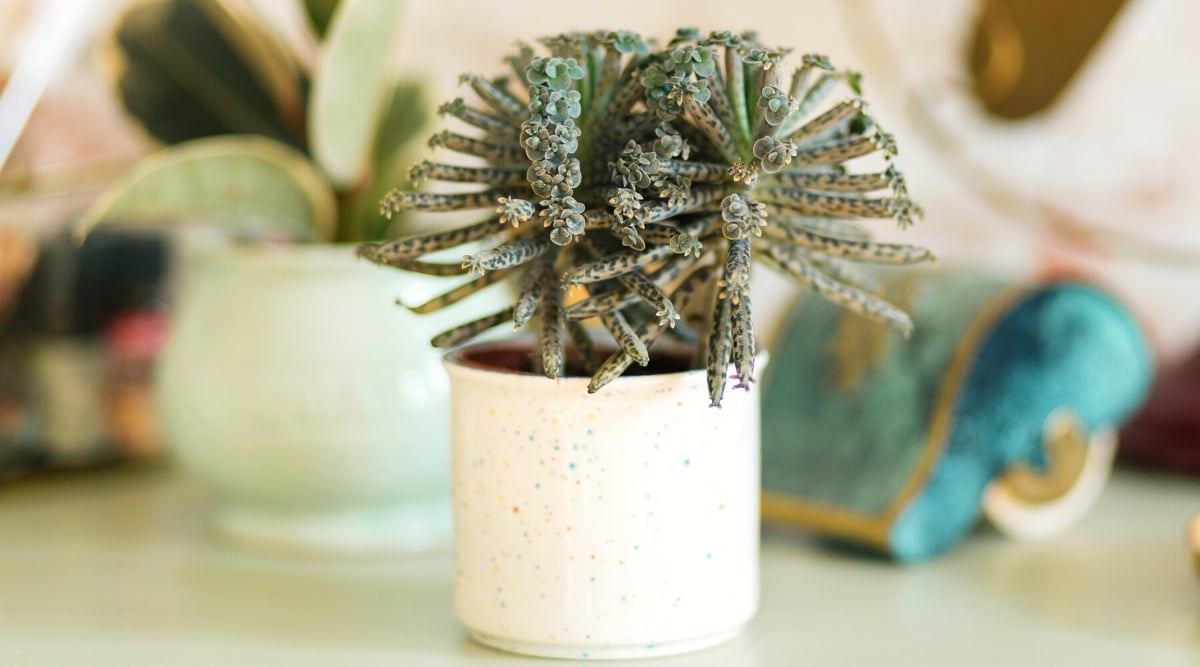

Moreover recognized by the determine Mother of Hundreds and hundreds, this species of Kalanchoe is intriguing and a dialog starter, notably when it is in bloom. This plant’s skinny, branching stems and leaves are mild inexperienced with brown markings. Alongside the margins of the leaves, a phenomenon frequent to the genus is especially prolific on this species.
Many small plantlets sort all alongside the sides of every leaf, giving this plant its nickname, Mother of Hundreds and hundreds. Tall flower spikes develop from the very best of the plant and burst into big clusters of coral-colored, bell-shaped flowers.
Like totally different Kalanchoes, Chandelier Plant likes a great deal of vivid nonetheless indirect mild. It desires a interval of darkness to bloom, so place it in a room that shall be darkish for 14 hours per day for about six weeks inside the fall.
Burro’s Tail
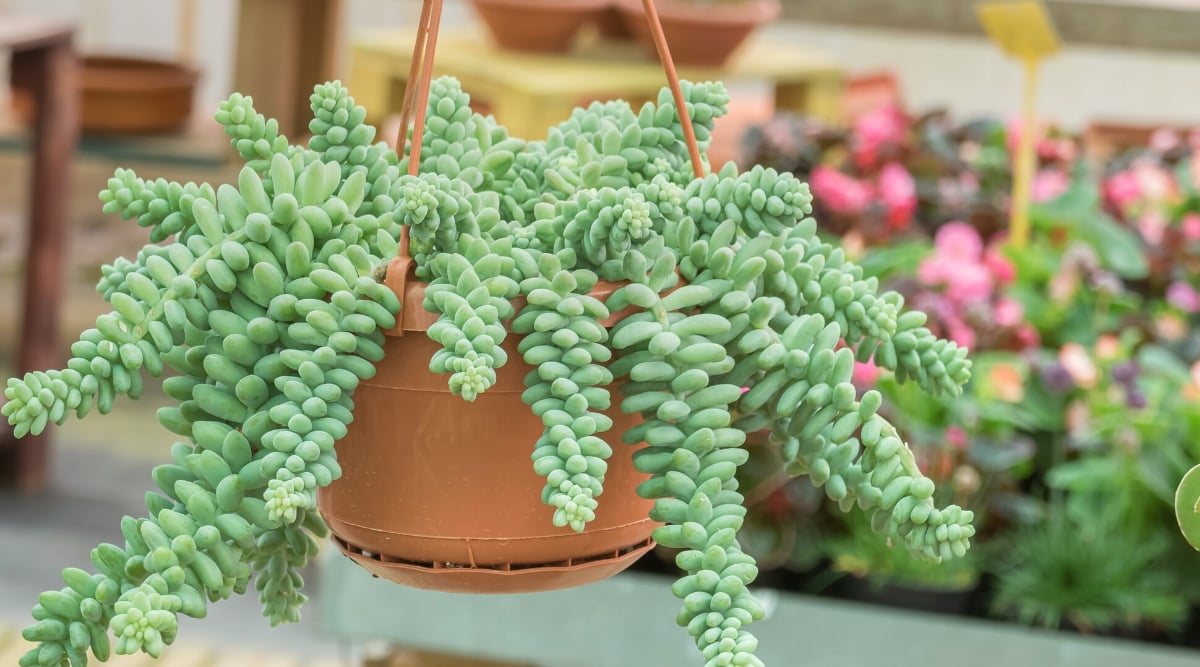

Burro’s Tail is one different eye-catching, trailing succulent. Its tightly clustered leaves develop in a gentle rosette, reaching lengths of as a lot as 4 toes prolonged over time. These are low-maintenance and actually easy to propagate by taking stem or leaf cuttings and simply laying them on excessive of the soil.
Although they not typically bloom indoors, they’re going to produce pink or pink flowers. If you happen to want your plant to flower, it need to be uncovered to relax local weather and elevated darkness inside the winter. Regardless of its potential to flower, this is usually a really pleasant and engaging plant that is certain to get a great deal of consideration.
Like most succulents, Burro’s Tail is straightforward to take care of and prefers a bit of little bit of neglect. Overwatering is the worst issue you’ll be able to do for this plant. If the leaves are rising out with further area than they should, the plant possibly desires further daylight. An absence of photo voltaic will make this plant develop leggy, which, although not unattractive, doesn’t have the similar seen influence.
Christmas Cactus
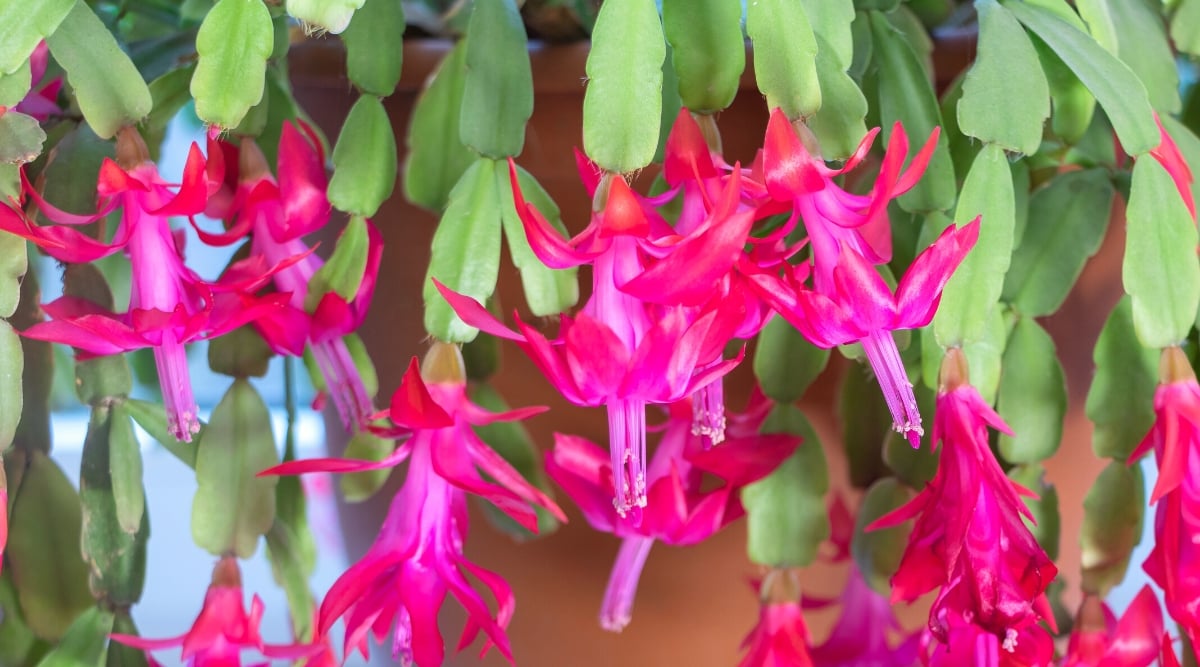

For most of the 12 months, Christmas Cactus is a reasonably and distinctive plant with segmented stems that blush if uncovered to direct photo voltaic or chilly temperatures. Inside the winter, this plant, which is certainly a succulent pretty than a cactus, reveals off in a severe strategy.
This plant and its cousin, the Thanksgiving Cactus, produce really implausible blooms inside the late fall and winter seasons. Like most succulents on this itemizing, the combo of shortening daytime and cooling temperatures induce blooming, so exposing your plant to these parts inside the fall will result in greater flowering.
Neglect is the phrase by means of care. Christmas Cactus crops don’t need so much consideration. They like indirect or filtered mild and solely ought to be watered when the soil dries out. Over time, these crops can develop pretty big and kind thick, woody stems on the bottom.
African Milk Tree
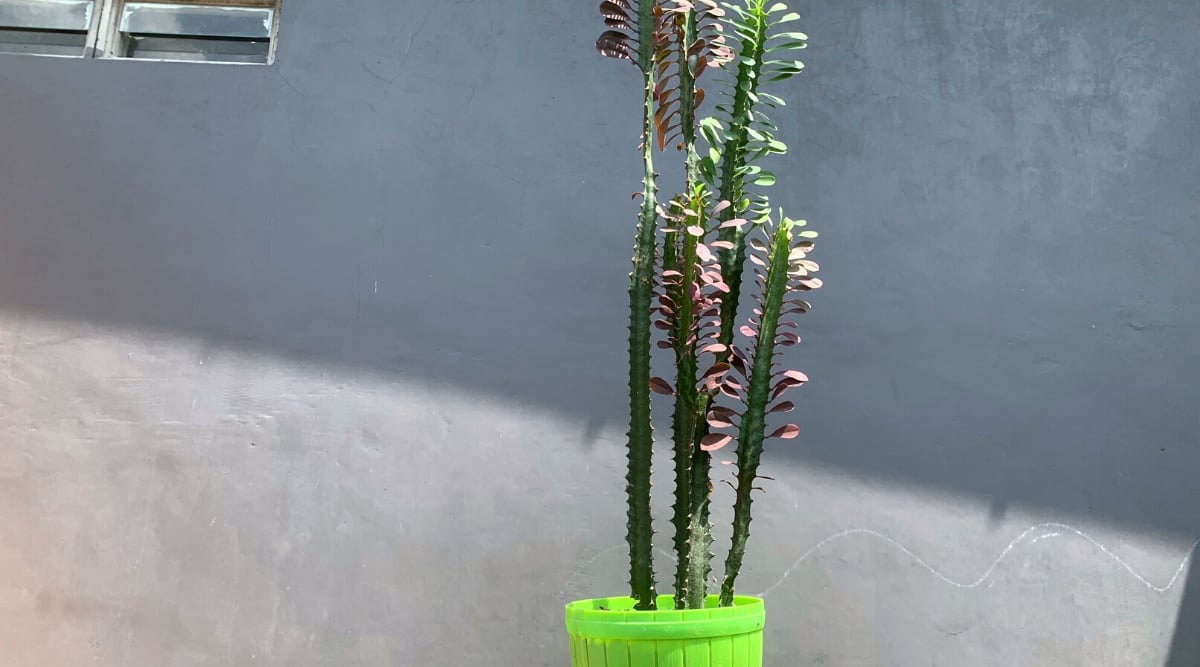

African Milk Tree is an effective plant inside the Euphorbia genus, which includes poinsettias. These crops all produce a milky sap, which is toxic to of us and animals, so maintain this one out of attain of curious palms. It is a fast grower, gaining one to 2 toes yearly until reaching a mature high of about 9 toes.
Alongside the sides of the stems develop stiff, pointed spines that alternate with paddle-like leaves. African Milk Tree loves as so much mild as potential nonetheless will flip purple when burdened by chilly temperatures. Within the occasion you regularly neglect to water houseplants, this is usually a good risk because of it prefers to be uncared for most of the time.
Coral Bells
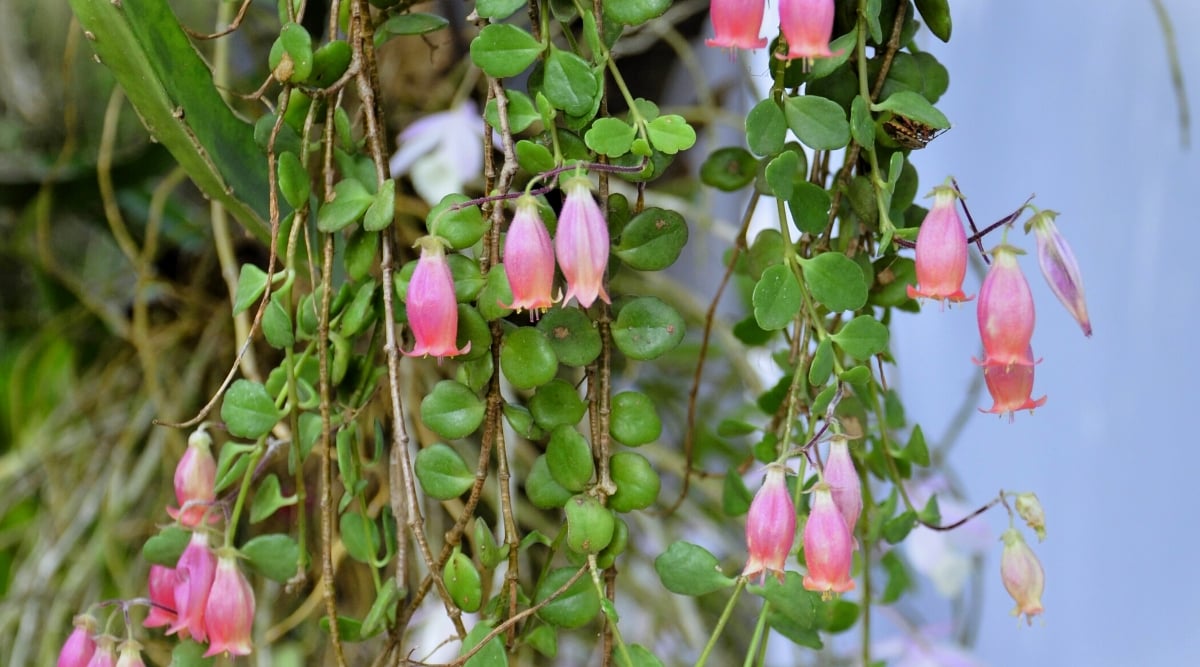

Within the occasion you couldn’t inform by now, I really like Kalanchoes! ‘Coral Bells’ is a superb epiphytic species with a trailing habits and makes a nice hanging plant (nonetheless don’t confuse it with the other solely utterly totally different plant with the similar determine). The stems are prolonged and slender, reaching as a lot as 4 toes, with fleshy, vivid inexperienced leaves rising in pairs. On the end of these stems are branching inflorescences.
Each inflorescence holds small clusters of vivid pink, bell-shaped flowers that maintain pendulous as they get heavier. Sensible indirect mild or partial photo voltaic are the right conditions for ‘Coral Bells.’ Like totally different Kalanchoes, it requires some darkish and funky local weather to induce blooming, nonetheless it is properly effectively well worth the effort.
Mexican Peacock
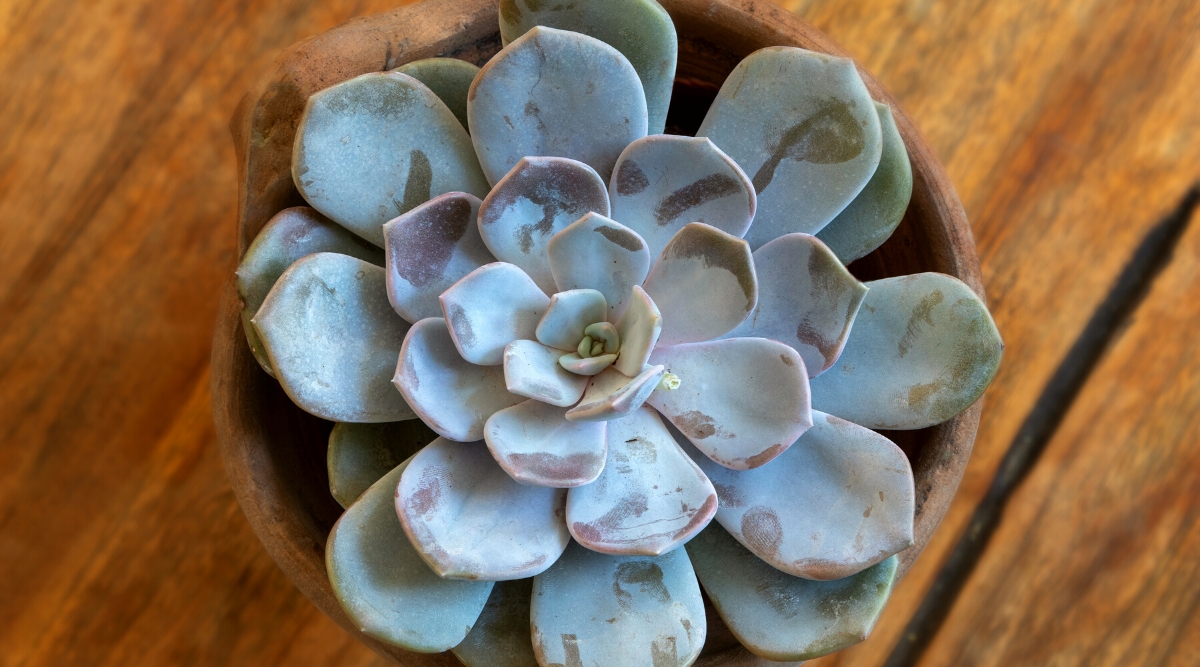

Echeveria are beautiful succulent crops with tight rosettes of pointed leaves and beautiful floral exhibits. The Mexican Peacock is a really pretty species with luminous, pale blue leaves. The ends of these leaves blush when uncovered to chilly or direct photo voltaic, giving them a warmth glow all through the sides.
Like totally different Echeveria, the Mexican Peacock produces a tall, fleshy stem within the summertime that bears vivid, coral-colored, bell-shaped flowers. It produces offsets bountifully, making a carpet of rosettes quickly. This can be very merely propagated and low maintenance. Give this plant a great deal of daylight and water sparingly.
Ruby Blush Chenille Plant
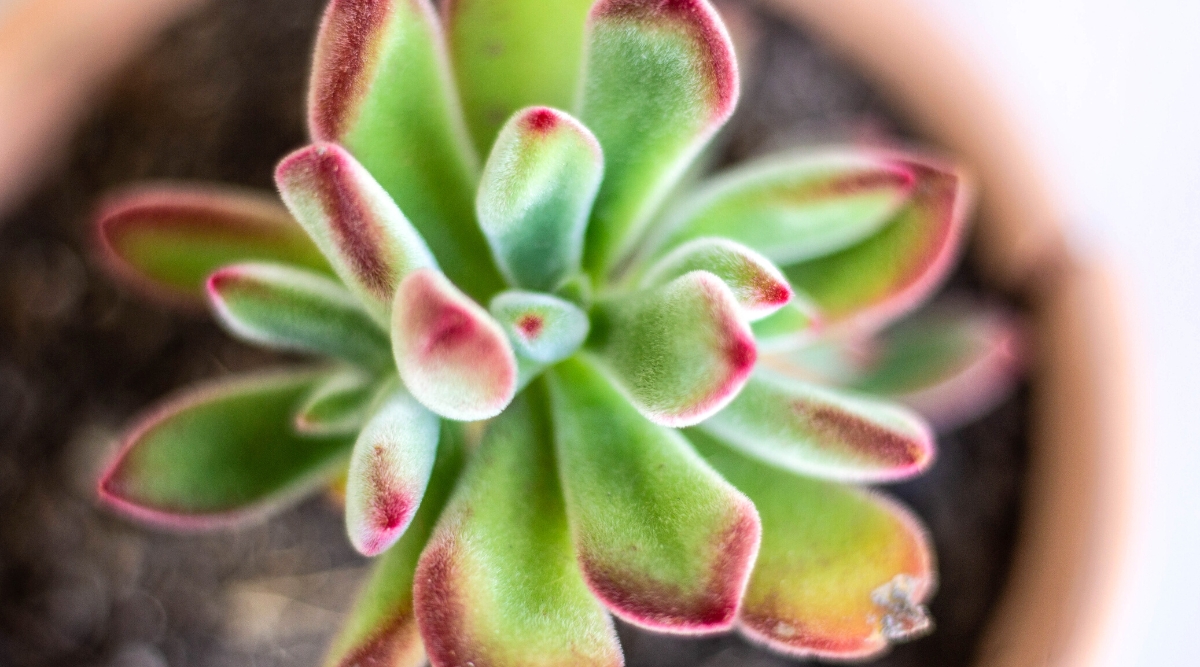

This cuddly succulent is among the many most richly colored Echeverias and has fairly, comfy, flocked leaves. Unfastened rosettes of fat, fleshy leaves are mild grey-green when immature, nonetheless when uncovered to full photo voltaic, they deepen to a positively magical shade of scarlet. Each leaf is roofed briefly silver hairs that make the plant really feel and seem comfy and velvety.
If the foliage isn’t ample to advertise you on this succulent, it flowers moreover! In winter, as a lot as one-foot tall inflorescences sprout with clustered vivid orange and yellow flowers on the excessive. Ruby Blush is straightforward to propagate. It prefers full photo voltaic and occasional watering. Don’t ever let this plant sit inside the water. Overabundant moisture will rot the roots and leaves.
Cathedral Window Haworthia
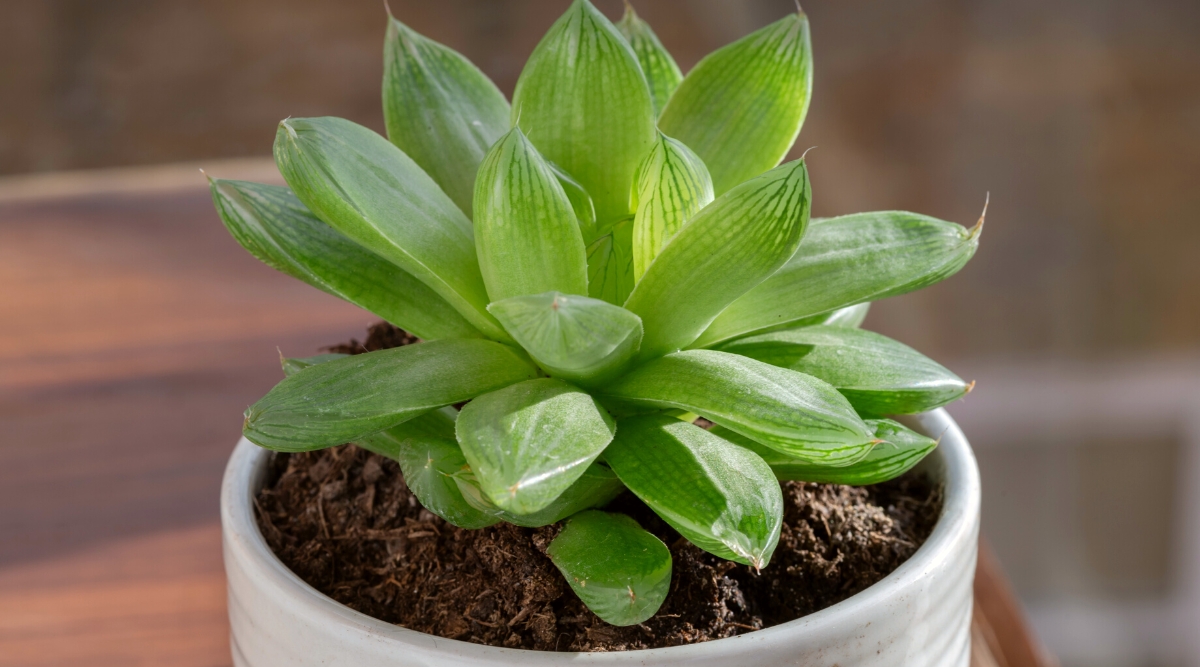

Cathedral Window Haworthia is a quiet magnificence that shall be a dialog starter alongside along with your plant-loving mates. The determine comes from the seems of the leaves, which can be thick and fleshy, nonetheless pretty than an opaque outer membrane, the very best of the leaves have a translucent look.
Haworthias are easy to take care of. They like an extreme quantity of indirect mild nonetheless could even develop in partial photo voltaic. They’re easy to propagate and take care of. If the leaves look pale and elongated, your haworthia possibly desires further mild. A purple blush means give it further shade.
Pagoda Village Crassula
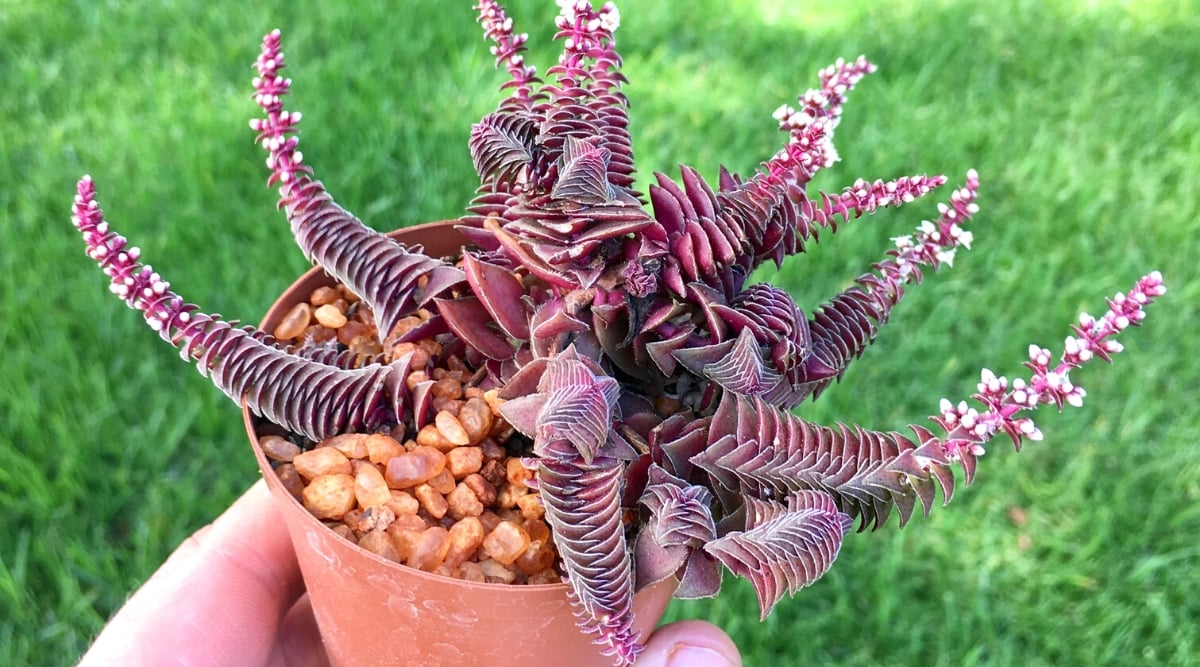

No person will overlook this fascinating crassula plant. The tightly stacked rosettes of triangular leaves row vertically, giving the plant its frequent determine, ‘Pagoda Village’. Various stems in a cluster look like a set of multi-level pagodas rising from the underside.
The blooming habits is breathtaking, with pale pink blossoms peeking out between each layer of pointed leaves. As a result of the plant ages, it sometimes takes on a trailing habits, spilling over the facet of its container. Stress introduced on by photo voltaic publicity, drought, or chilly will set off the foliage to flush a shocking burgundy shade.
Flaming Katy
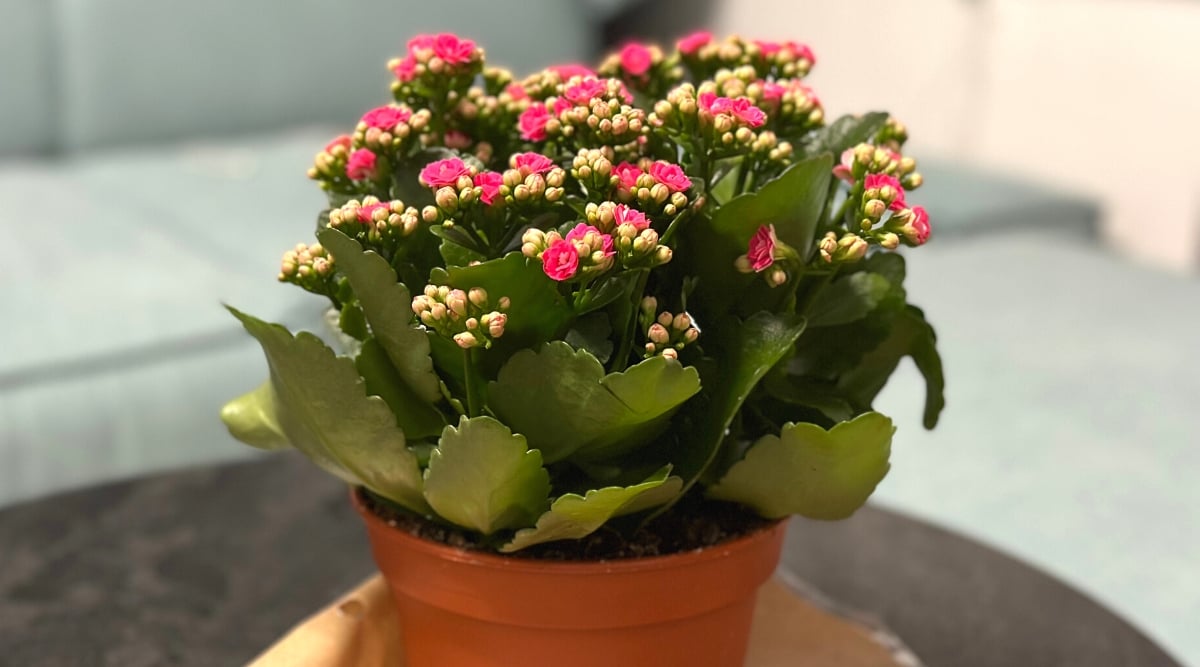

All types of Okay. blossfeldiana are implausible, blooming succulents. Deciding on just one to share with you was troublesome, and I extraordinarily encourage you to uncover all of the beautiful varieties. I’ve, in luck, inherited various of these crops, and the dependability of their flowers brings me pleasure inside the coldest months when little else is blooming.
Protect your blossfeldianas in vivid nonetheless indirect mild all day. Putting them outdoor on a coated porch or patio for a few weeks inside the fall will improve their blooms, making a spectacle of implausible flowers in opposition to thick, fleshy, lobed leaves. The flowers can develop in a single or double-petal sort, and under the proper conditions, big clusters of flowers must sort on the end of each division in winter.
White Velvet
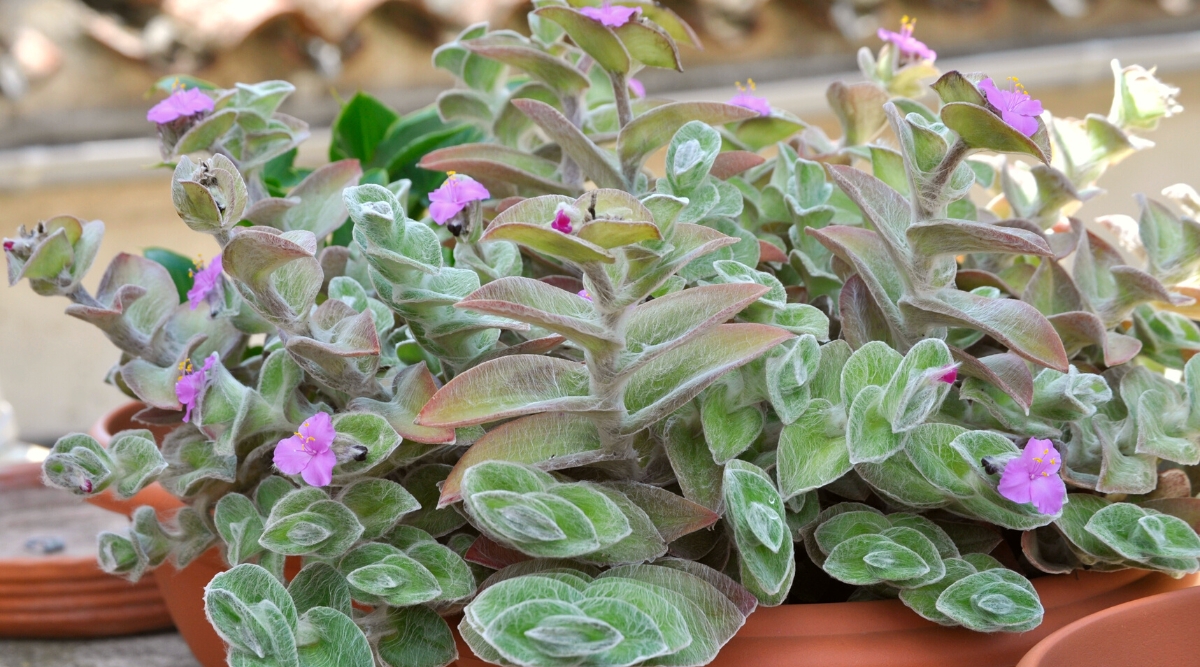

For a extremely easygoing plant with eye-catching foliage and flowers, ‘White Velvet’ is a stunner. This plant has utterly totally different names, so the scientific determine is perhaps biggest once you’re seeking your particular person cultivar. Open air, ‘White Velvet’ acts as a ground cowl, however it has a cascading habits in a container.
The sunshine inexperienced leaves are flocked with silvery hairs, and orchid purple flowers pop up on the ends of branches for a stupendous distinction. This relative of zebrina has all of the similar rising habits and associated desires, nonetheless the look is unique and attention-grabbing.
Million Hearts
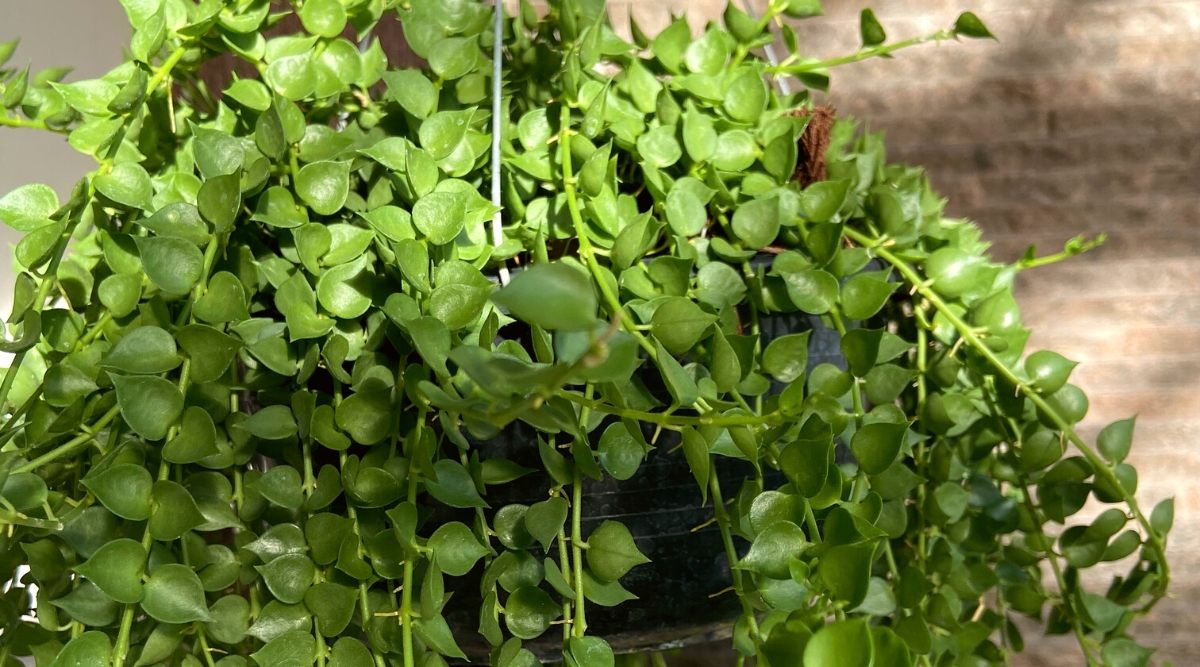

Million Hearts is the correct technique to unfold love and happiness to your plant-loving members of the family. This sweet, delicate, trailing succulent lives as a lot as its determine, with small heart-shaped leaves in enormous parts. Beneath the proper conditions, this plant will produce many pretty, white flowers to mingle with its fairly leaves.
A great deal of vivid, indirect mild is required to take care of this succulent. Not like one other succulents, Million Hearts likes amount of water. When the soil is kind of dry, make sure to soak this plant properly. Its temperature want of 65°-85°F makes this a wonderful houseplant. Extreme humidity will make this plant even happier.
Pink Butterflies
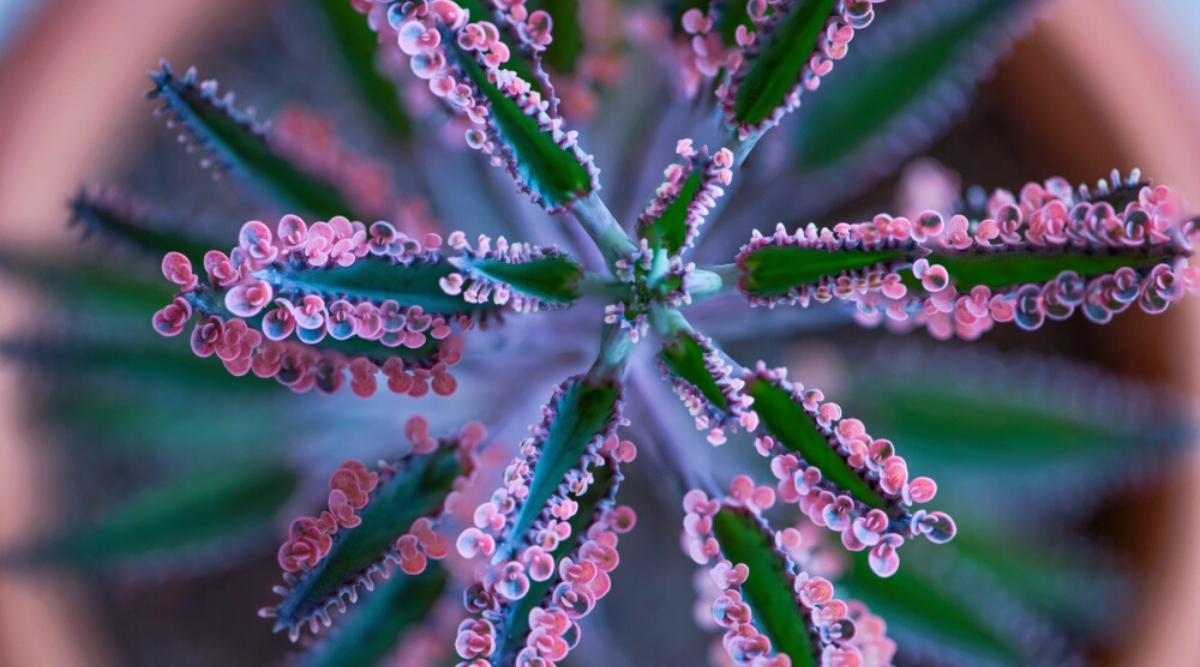

We started with a Kalanchoe, and I’d favor to wrap up with one different. These really are a couple of of probably the most implausible, beautiful succulents. Pink Butterflies could also be very associated in look to the Chandelier Plant, with one very distinctive distinction. The tiny plantlets that develop alongside the margins of each leaf are cotton candy pink.
These sweet plantlets are fragile, so avoiding coping with or jostling them spherical is biggest. Fortunately, they require little or no maintenance. For most of the day, vivid, indirect mild will maintain Pink Butterflies making an attempt its biggest. Solely water when the soil is dry to the contact. The flowers are a lot much less spectacular than some varieties, nonetheless the leaves make up for it!
Remaining Concepts
With so many beautiful and low-maintenance succulents accessible, you may want trouble choosing just one in order so as to add to your indoor yard. I extraordinarily advocate selecting up on the very least one species of Kalanchoe for its great winter blooming habits and spectacular floral exhibits. Whichever succulent you choose, together with actually one in every of these crops is particular to please the eye and the soul… or soil, as a result of the case is also.
[ad_2]
Provide hyperlink
